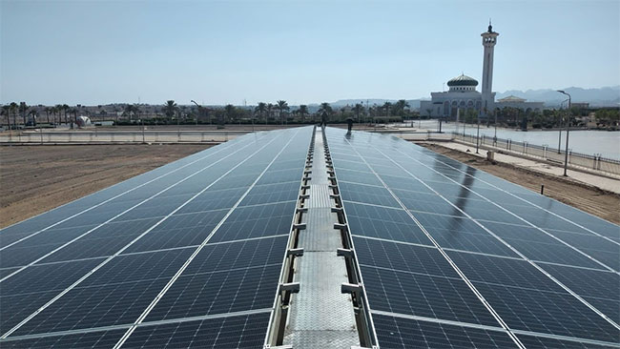Solar energy stations have been successfully installed at five archaeological sites and museums in Egypt, depicting a collaborative effort by the Ministry of Tourism and Antiquities, the Supreme Council for Antiquities (SCA), the Industrial Modernization Centre, and the United Nations Development Programme (UNDP) in Egypt.
This initiative is said to be a part of the Egypt PV flagship project that signifies a significant move towards sustainable tourism and the preservation of Egypt’s cultural heritage.
The five solar energy stations are located at the Giza Plateau’s Visitor Center, Mohamed Aly Palace in Manial, Sharm El-Sheikh Museum, and the National and Royal Jewelry Museums in Alexandria. With a total capacity of 325 kW, these photovoltaic systems are estimated to generate 520 MW.hr/year, resulting in an annual reduction of approximately 295 tons of carbon dioxide equivalent greenhouse gas emissions.
The completion of the Egypt PV flagship project, supported initially by the Global Environment Facility (GEF) and has been funded by the European Union through the UNDP project with the COP27 presidency. This marks a pioneering effort that has opened avenues for rooftop small-scale PV systems in Egypt. The project involves various government and private sector stakeholders that aim to integrate sustainable technologies and strengthen connections between the government and the private sector in the tourism industry.
During a ceremony held at Mohamed Aly Palace in Manial, Ghada Shalaby, Vice Minister of Tourism and Antiquities for Tourism Affairs, emphasized the ministry’s commitment to sustainable growth while safeguarding Egypt’s historical monuments for future generations. Recognizing the global demand for responsible tourism, the ministry actively collaborates with partners such as the UNDP and UNWTO to expand sustainable technologies and foster connections in the tourism industry.
Mostafa Waziri, Secretary-General of the SCA, highlighted the strategic step of integrating solar energy across all Egyptian world heritage sites and museums, aligning with the Ministry’s strategy to transform these locations into green spaces relying on sustainable solar energy. The implementation of solar power stations is part of a broader plan to achieve Egypt’s Sustainable Development Strategy for 2030.
Alessandro Fracassetti, UNDP’s Resident Representative in Egypt, commended the transformative impact of the project, expressing hope that it would inspire similar efforts, providing green electricity to all historical sites in Egypt. The Egypt PV project aligns with Sustainable Development Goals 7 and 13 and Egypt’s Vision 2030, focusing on promoting small-scale renewable energy systems and energy-efficient appliances to meet national NDC targets and renewable energy goals.
Moamen Othman, Head of the Museums Sector at the SCA, emphasized the commitment to sustainability by outlining a phased plan to implement solar energy at various museums and archaeological sites. Doaa Selima, Executive Director of the Industrial Modernization Centre, highlighted the center’s role in supporting the implementation of solar power stations, leveraging technical expertise gained through collaborative efforts with the Egypt PV project and UNDP funded by the GEF.


